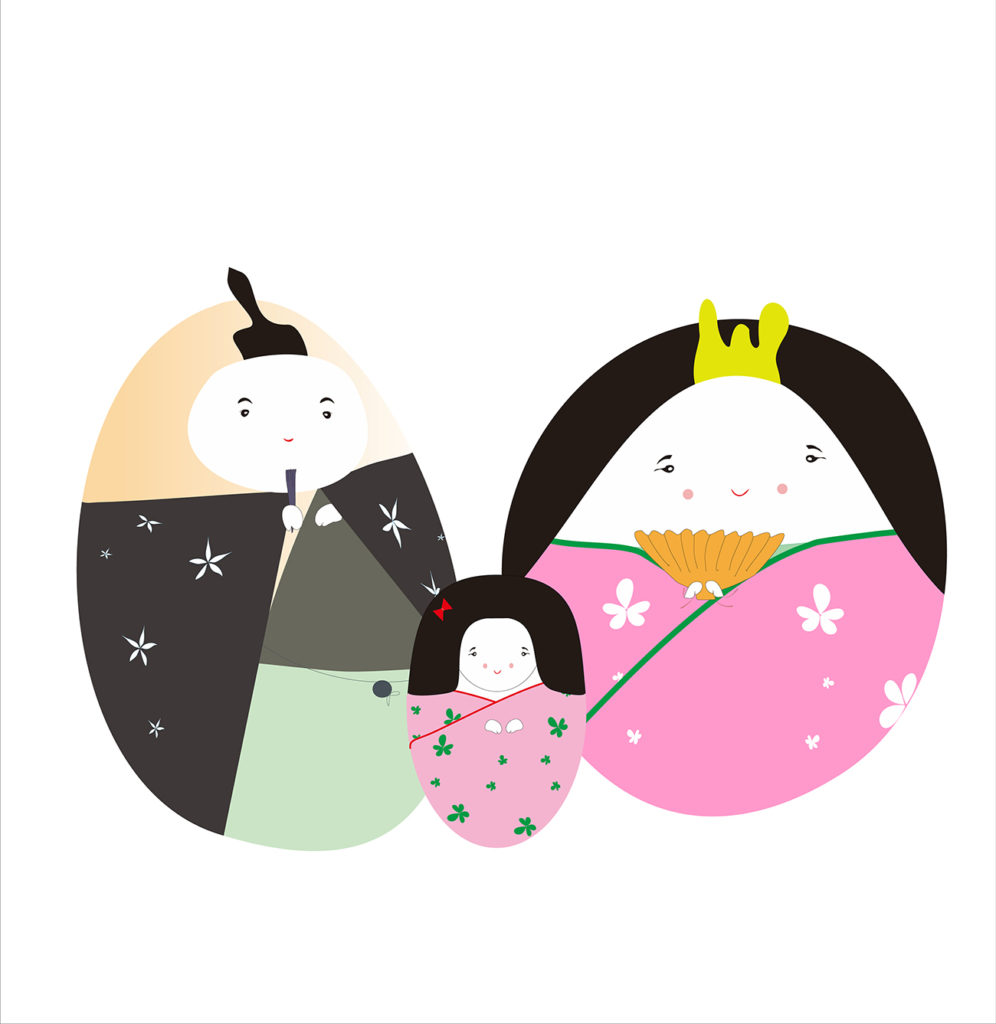
The Princess Daruma Dolls of Matsuyama
Ningyō (人形) are traditional Japanese dolls that come in various forms — from babies and imperial court personalities to warriors and gods. Many of the dolls have a long standing tradition in Japanese culture and history, and each one has a story. Ningyō is made today for shrines, festivals, souvenirs, and gift giving.
 Daruma dolls are one of the many traditional Japanese dolls. They are spherical in shape with red bodies, white faces, and no pupils. They typically represent Bodhidharma, the founder of Zen Buddhism. It is customary to paint one of the doll’s pupils at the beginning of New Year and make a wish, and if it comes true, to paint the second pupil. Daruma dolls are supposed to bring good fortune, prosperity, and fortitude to reach goals.
Daruma dolls are one of the many traditional Japanese dolls. They are spherical in shape with red bodies, white faces, and no pupils. They typically represent Bodhidharma, the founder of Zen Buddhism. It is customary to paint one of the doll’s pupils at the beginning of New Year and make a wish, and if it comes true, to paint the second pupil. Daruma dolls are supposed to bring good fortune, prosperity, and fortitude to reach goals.
Hime-daruma. | Akinori YAMADA
Similar to the daruma doll is the hime-daruma, “hime” meaning princess. It originated from Matsuyama and is still popular in the area. The doll signifies the legendary Empress Consort Jingu who, according to history, conquered Korea. As the story goes, Empress Jingu along with her husband Emperor Chūai stopped by a hot spring at Dogo while on their way to Korea. Empress Jingu discovered that she was pregnant, so she had a doll made and offered it to the local gods in prayer for the health and safe delivery of her child. She was said to have carried the child for three years, after which a son was born who later became Emperor Ōjin. Isaniwa Shrine, the site where Emperor Chūai and Empress Jingū bathed in Dogo Onsen, still stands today.
Hime-daruma dolls were originally made of wood, but the dolls today are made with either brocade or papier-mâché. The papier-mâché dolls are usually painted bright red resembling conventional daruma dolls. The faces are made of white bisque ceramic, painted by hand, with charcoal black eyes and red lips. The hair can either be artificial or painted on. They are often given as gifts to pregnant women for a safe delivery and quick recovery. The brocade dolls come as a couple and represent Empress Jingu and Emperor Chūai. The female dolls are usually dressed in red brocade, while the male wears blue or gold. The dolls are often given as wedding gifts. Hime-daruma dolls are lightweight and make wonderful souvenirs from Matsuyama, Japan.

